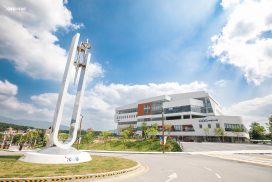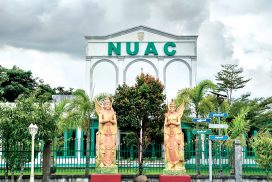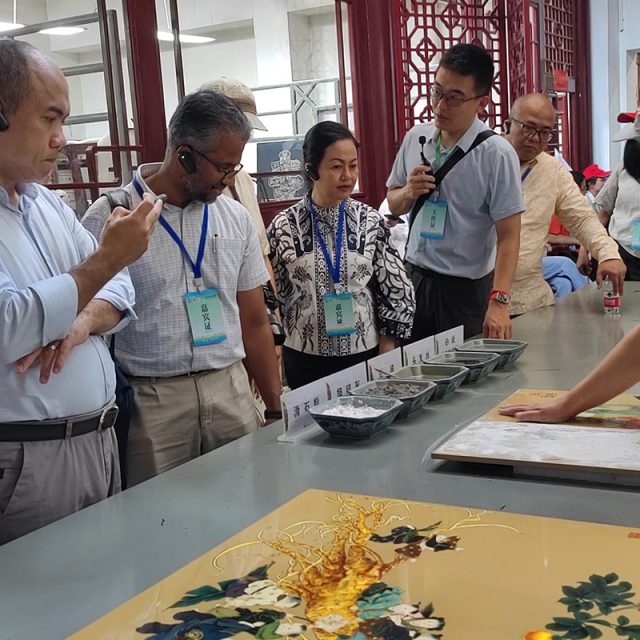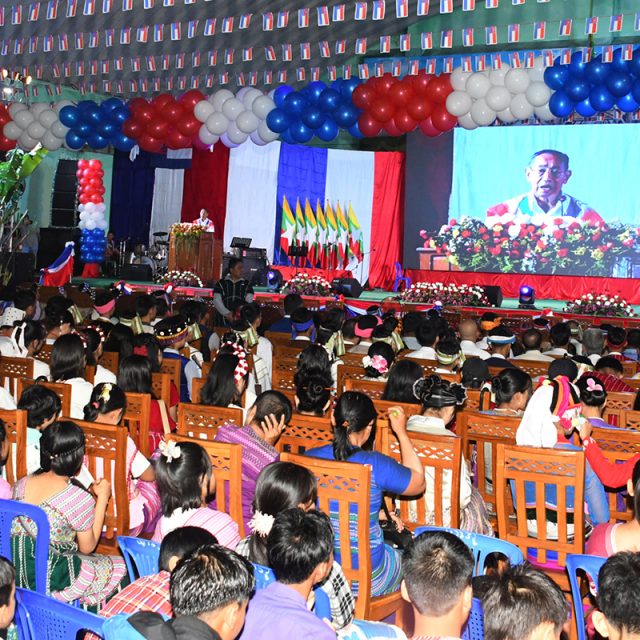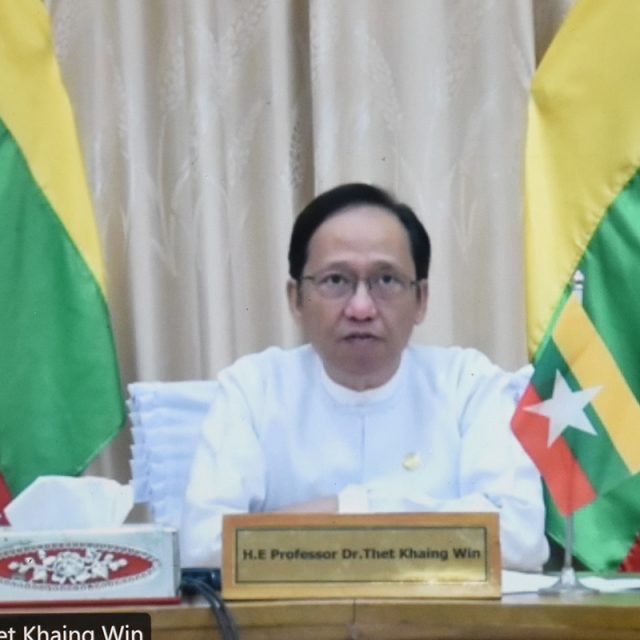At the ancient University of Nalanda, there was a spirit of vibrant intellectual thought and a climate of discussion and debate. The many ‘acharyas’, or learned professors at Nalanda, authored hundreds of works on philosophy, metaphysics, psychology, logic, medicine, astrology, arts, literature and other subjects.
The study at Nalanda was about life itself and what reality is. It was based not upon faith but on unshakable logic and pursuit of the truth. The study was of our minds, our perceptions, and what knowledge is. The intellectuals here analyzed the qualities that led to Enlightenment through knowledge and sought to create a logical path that could lead us to true and lasting awareness – A path which would work for all.
This was the first known great University in the world. Nalanda was also at the apex of a consortium of universities that had developed in ancient and early medieval times in South and South East Asia. It was from these ancient universities that concepts of rigorous and logical study finally spread to other parts of the world, leading to the founding of universities in Europe. The consortium of universities with Nalanda at its apex included Vikramshila, Odantapuri, Somavihara Paharpur, Sumatra Indonesia, Takshashila, and Palkh (now in Afghanistan). Nalanda was the earliest-known university in the world, and it was the first consortium. It is quite amazing to see that such study and sharing of universal knowledge took place in the First Millennium.
The Government of India is making a notable effort to revive the real legacy of Nalanda so that people can see the value of this tradition and how it enriches the tapestry of global knowledge. What is more, the comparative study of the Nalanda tradition and modern science can definitely uplift our civilization. This ancient tradition is a science of life which can help us so much.
Nalanda in the 21st century
The honourable Prime Minister of India inaugurated the new campus of Nalanda University, an international university, close to the site of the ancient ruins of Nalanda, in Bihar, on 19 June 2024.
The modern Nalanda University was established as an “international institution for the pursuit of intellectual, philosophical, historical and spiritual studies”. The impetus to setting up this institution came under the leadership of Hon. Prime Minister Shri Narendra Modi when a major push was given from 2014 onwards to establish the University as an international centre of learning and scholarship, reminding the world of the 21st century of the eminence of ancient Nalanda.
This international University, apart from India, has the participation of 17 other nations: Australia, Bangladesh, Bhutan, Brunei Darussalam, Cambodia, China, Indonesia, Laos, Mauritius, Myanmar, New Zealand, Portugal, Singapore, South Korea, Sri Lanka, Thailand and Vietnam.
The University has 137 scholarships for international students. It offers postgraduate and Doctoral research courses and short-term certificate courses. It has six schools: the School of Buddhist Studies, Philosophy & Comparative Religions; the School of Historical Studies; the School of Ecology and Environmental Studies; the School of Sustainable Development and Management; the School of Languages and Literature; and the School of International Relations and Peace Studies which is yet to commence.
A Library with a capacity to hold 300,000 Books and serve up to 3,000 users is scheduled to be completed by September 2024. This would be in keeping with the glorious tradition of the original Nalanda University.
Ancient Nalanda
The best-known Buddhist universities, Nalanda, Vikramasila, and Odantpuri, were in Eastern India, in the present-day Bihar region. The greatest of these centres of study was at Nalanda. It was a hub of learning where pilgrims and scholars came from all corners of Asia.
Nalanda was visited by the Buddha himself. In the 3rd century BCE, Emperor Ashoka is believed to have made offerings to the chaitya of Sariputra and erected a temple here. However, the origins of the University itself are obscured in the mists of time. The medieval Tibetan historian Taranatha mentions that the great Buddhist philosopher Nagarjuna, who was born in the middle of the 2nd century CE, taught here.
Excavations at the Nalanda site have revealed numerous stupas, monasteries, hostels, staircases, meditation halls and other structures. These speak of the splendour of the University, which was also famed for its three magnificent libraries.
The Chinese pilgrim Xuanzang of the 7th century writes that, of the myriad Buddhist establishments of India, Nalanda “is the most remarkable for its grandeur”. The priests and other residents “always reach the number of ten thousand”.
Another Chinese traveller, I-Tsing, travelled to India at the end of the 7th century. He reported that in these monasteries, Buddhist sutras were taught, as well as Sanskrit grammar, Indian Logic and Metaphysics, fine arts and medicine.
There was a rigorous oral entry examination, and only the best students were admitted. It was a residential university where the staff and students had free board and lodging. No tuition fees were charged. Xuanzang records that there were students here from Tibet, China, Korea, Japan, Sumatra, Java and Sri Lanka. It was truly an international university.
The highest intellectual atmosphere of debate and scholarship was maintained at Nalanda University. This was the thriving intellectual environment of Nalanda, which produced the most notable Buddhist thinkers and brought about significant developments in Buddhism.
Famous Intellectuals of Nalanda
The most revered name in Mahayana Buddhist philosophy is that of Nagarjuna, who was born in the middle of the 2nd century CE in South India.
He was a luminary of the Nalanda University, and he formalized the concept of Sunyata or ‘Emptiness’. The Madhyamika School of Buddhism, or ‘The Middle Path’, was created on the teachings of Nagarjuna.
Dinnaga of Nalanda University was born at Kanchipuram in South India. He lived in the 5th century and is known as the founder of the system of Buddhist Logic. He authored over a hundred treatizes on the subject, most of which are still preserved in Chinese and Tibetan translations.
When Xuanzang visited Nalanda, he studied under the famed Guru Dharmapala. The teacher was also known for having spread the knowledge of Buddhism in Indonesia.
One of the noted students of Dharmapala was the brilliant logician Dharmakirti. He lived in the 7th century and was born at Tirumalai in South India. Dharmakirti’s writings mark one of the highest points reached in speculative philosophy.
The learned Santaraksita of the Nalanda University founded the first monastic order in Tibet. He also modelled Samye, the first monastery of Tibet, on the Odantpuri Mahavihara in Eastern India. At his suggestion, the Tibetan king also invited Guru Padmasambhava, who was then teaching in the region of Kashmir at that time. Padmasambhava, who was also of the Nalanda University, went on to become the most revered person in the entire Himalayan and trans-Himalayan region, where he is known as the ‘The Second Buddha’. The Guru swept across the mountains, establishing Buddhism in Ladakh, Lahaul-Spiti, Kinnaur, Tibet, Bhutan and Arunachal Pradesh.
Atisa or Dipankara Srijnana (980-1054) was born in East Bengal, studied at Nalanda University and then became one of the leading teachers at the University of Vikramshila, also in Bihar. King Yeshe’ Od invited him to Tibet, and he accepted his invitation at the age of 60 in CE 1040. He left Vikramshila and stayed in Tibet until his death. He consolidated the true knowledge of Buddhism in that land.
The Art of Nalanda
Nalanda marks the beginning of the Pan-Indian medieval idiom in art. The perfected human form was created in Indian art by the 5th century CE to help in meditation and to awaken the grace within us. At Nalanda, in the post-Gupta period, the focus came on the dynamism of the intellect, which analyses in acute detail the qualities which lead to nirvana. This is seen reflected in the vitality and sharp features of the stucco sculptures found at Nalanda. The figures have a greater stylization than in earlier Indian art.
Angular and dynamic relief made in the plinth of stupas was a common feature during the Pala period. This is found beginning at Nalanda and spreading across Eastern India and Bangladesh, going up to Tripura, where it is seen in the remains of the Pilak stupa in Udaigiri District. The educational and cultural legacy of the Nalanda University is remarkable.
(Views expressed in the article belong solely to the author).



